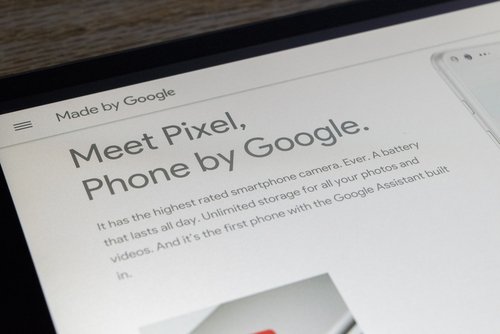Key Takeaways:
- Google’s Pixel 10 Pro uses AI-based Pro Res Zoom to reach 100x magnification.
- The Pixel’s Tensor G5 chip and Gemini Nano power the Pro Res Zoom feature.
- Pro Res Zoom shows its best work in bright light with sharp, detailed shots.
- Critics warn about possible artifacts and concerns over image authenticity.
- Pro Res Zoom fuels debates on where AI belongs in modern photography.
Pro Res Zoom: A New Era in Zoom Tech
Google’s Pixel 10 Pro takes mobile photography to a new level. It uses the Pro Res Zoom feature to go beyond traditional optical limits. Powered by the Tensor G5 chip and Gemini Nano, this tech generates the details that hardware alone cannot capture. Many users praise its crisp results in daylight. However, some worry about AI artifacts and image authenticity. As a result, this innovation sparks fresh debates on AI in photography.
How Pro Res Zoom Achieves 100x Zoom
To zoom in 100 times, the phone first captures many small details. Then it hands them off to on-board AI. The Gemini Nano model predicts missing pixels and sharpens edges. Meanwhile, the Tensor G5 chip processes everything quickly. This method blends real optical data with AI-generated content. Therefore, the phone can show distant objects in surprising clarity.
Strengths and Limitations
In bright light, Pro Res Zoom shines. For example, you can read distant text on street signs or capture clear wildlife shots. Moreover, the AI uses real images to guide its guesses. This makes most photos look natural. However, in low light the feature may struggle. Shadows can blur or show odd patterns. In addition, fast-moving subjects may produce ghosting or strange artifacts. As a result, some users find the images less trustworthy.
AI Artifacts and Authenticity Concerns
Critics point out that Pro Res Zoom relies on AI to create what hardware misses. This process can introduce errors. For instance, tiny patterns may repeat unnaturally or edges may look too smooth. Consequently, some photographers ask if these images truly reflect reality. They worry that AI might mislead viewers or alter facts. Therefore, debates swirl over where to draw the line between enhancement and fabrication.
What This Means for Mobile Photography
Pro Res Zoom could change how we think about phone cameras. In fact, AI-driven zoom may become a key selling point. Yet, it also raises ethical questions. Should phones disclose which parts of an image they generated? Will audiences trust photos more or less as AI grows common? As a result, future updates may include transparency tools. For example, a simple indicator could show how much AI shaped each image.
Tips for Using Pro Res Zoom
• Use bright, even lighting. AI works best when it has real data to build on.
• Keep your subject still. Moving objects can confuse the AI model.
• Combine zoom with burst mode to pick the sharpest frame.
• Compare zoom shots with normal zoom to spot any odd artifacts.
Balancing AI and Optical Hardware
Optical zoom relies on real lenses to magnify a scene. In contrast, Pro Res Zoom fuses optical data with AI-crafted pixels. Thus, the Pixel 10 Pro blurs the line between hardware and software. This blend can yield more powerful zoom than any lens alone. However, pure optical shots still feel more ‘authentic’ to some users. Going forward, phone makers may aim for a hybrid design that combines both strengths.
Future Innovations on the Horizon
Google’s work with Pro Res Zoom may just be the beginning. We might soon see AI features that improve low-light zoom. Furthermore, machine learning could adapt to your shooting style. Maybe future phones will learn how you like to edit or frame your shots. As AI models grow smarter, they could offer real-time feedback on composition and lighting. Undoubtedly, these changes will continue to reshape mobile photography.
Conclusion
Pro Res Zoom on the Pixel 10 Pro marks a big step in phone camera tech. By merging AI with optics, it achieves impressive 100x zoom in good light. Yet, it also raises valid concerns about artifacts and image truth. As AI becomes more common in cameras, users and makers must find a balance. Clear disclosures and improved software may help build trust. Ultimately, Pro Res Zoom sparks a lively debate on the future of photography.
Frequently Asked Questions
How does Pro Res Zoom differ from regular digital zoom?
Regular digital zoom simply crops and enlarges pixels, often leading to blur. Pro Res Zoom uses AI to fill in missing details, creating sharper images.
Will Pro Res Zoom work well indoors or in low light?
It performs best in bright, even lighting. In dim or uneven light, the AI may struggle, leading to artifacts or noise in your photos.
Can I turn off the AI enhancement if I prefer pure optical zoom?
Yes. You can switch back to standard optical zoom in the camera settings, ensuring no AI-generated content affects your shot.
Does Pro Res Zoom affect battery life or performance?
Using Pro Res Zoom does increase processing power and can drain the battery faster. However, Google optimizes the feature to balance performance and efficiency.

